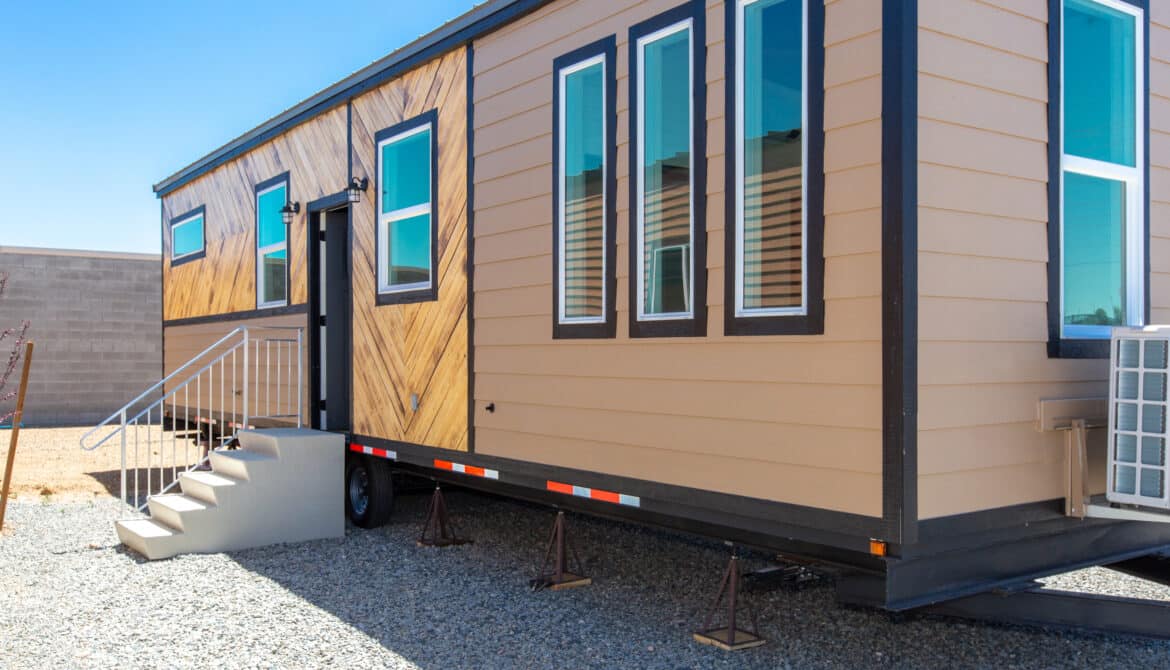Table of Contents
- Benefits of Building a Shipping Container Tiny House
- Benefits of Building a Shipping Container Tiny House
- Steps to Building a Shipping Container Tiny House
- Choose Your Design and Floor Plan
- Insulate Your Shipping Container Home
- Fit Out the Interior of Your Shipping Container Home
- Choose and Buy Your Shipping Container
- Prepare the Site and Place the Shipping Container
- Connect Plumbing, Sewer, and Water Lines
- Add Windows and Doors
- Install Flooring
- Add The Electric
- Decorate And Move In
- Conclusion
Building a tiny house out of a shipping container is becoming increasingly popular, and for good reason. This type of tiny home offers many advantages over traditional construction methods. Not only can you save time and money on building your tiny house, but you also have the added benefit of reusing a container that would otherwise be thrown away. Additionally, these homes are secure and can be built in less time than traditional construction methods.
In this article, we’ll discuss the benefits of building a shipping container tiny house, as well as the steps needed to build one from scratch. We’ll also look at some design elements that will help you create the perfect tiny home for your needs. Finally, we’ll conclude by discussing how building a shipping container tiny house can be an affordable and eco-friendly way to live small.
Benefits of Building a Shipping Container Tiny House
Benefits of Building a Shipping Container Tiny House
Recycling is Good for the Environment
Building a shipping container tiny house is an eco-friendly way to build a home. Shipping containers are made from recycled steel and can be repurposed into homes, offices, or other structures. This helps reduce the amount of waste that goes into landfills. Additionally, shipping containers are extremely durable and can last for decades with minimal maintenance.
Can Build in Less Time
Using shipping containers to build a tiny house also helps save time. Because they are pre-fabricated, they can be quickly assembled on site, reducing the amount of time it takes to build a home. Additionally, because they are so durable, there is no need for additional structural support like with traditional building materials such as wood or brick.
Secure
Shipping containers are also incredibly secure compared to traditional building materials. They are designed to withstand extreme weather conditions and their walls are thick enough to prevent break-ins. Additionally, their doors can be locked from the inside and out making them even more secure than traditional homes.
Shipping container tiny houses offer many benefits over traditional homes including being eco-friendly, faster construction times, and increased security. They provide an affordable housing option that is both sustainable and safe for those looking to downsize or live off the grid.
Eco-friendly, faster construction, increased security benefits of building shipping container tiny house.
Steps to Building a Shipping Container Tiny House
Building a shipping container tiny house is becoming an increasingly popular option for those looking for a unique, eco-friendly, and affordable way to build their dream home. It can be a challenging process, but with careful planning and research, you can make it happen. Here are the essential steps to building your own shipping container tiny house.
Choose Your Design and Floor Plan
The first step in building your shipping container tiny house is to decide on your design and floor plan. You will need to think about how many rooms you want, what type of furniture you want to include, and where you want the kitchen, bathroom, bedroom, and living room areas to be located. Once you have decided on the layout of your home, you will need to create detailed drawings that include measurements of all the walls, windows, doors, etc., so that your builder can accurately construct the frame of your tiny house.
Insulate Your Shipping Container Home
Once you have designed and drawn up plans for your home’s frame, it’s time to start insulating it. Insulation helps keep your home warm in winter and cool in summer by trapping heat inside the walls. You can use spray foam insulation or fiberglass batting for this step. Make sure that all gaps between the walls are filled with insulation so that no air can escape from them.

Fit Out the Interior of Your Shipping Container Home
Now that you have insulated your shipping container home, it’s time to fit out the interior. This includes installing cabinets and countertops in the kitchen area as well as any other fixtures such as lighting and plumbing fixtures. You may also choose to install drywall on the interior walls if desired for extra insulation or soundproofing.
Choose and Buy Your Shipping Container
Once you have designed and insulated your home’s frame, it’s time to buy a shipping container that will serve as its foundation. When purchasing a shipping container make sure that it is structurally sound and has no major defects or rust damage. You should also measure it carefully before buying so that it fits perfectly into the frame of your tiny house once it arrives at its destination site.
Prepare the Site and Place the Shipping Container
Before placing your shipping container onto its foundation site, make sure that it is level by using either concrete blocks or wooden beams underneath each corner of the container until they are even with one another. Once leveled out correctly, place the container onto its foundation site using a crane or forklift truck if necessary.
Connect Plumbing, Sewer, and Water Lines
Next up is connecting plumbing lines from within your home to outside sewer systems or water sources such as wells or municipal water supplies depending on where you live. Make sure that all pipes are fitted correctly according to local codes before connecting them together so there are no leaks or problems when using them later on down the line.
Add Windows and Doors
Adding windows and doors into your tiny house is an important step in creating an inviting atmosphere inside while allowing natural light in during daytime hours too. Measure out where each window should go then cut out holes into each side of the shipping container accordingly before fitting them into place with screws or bolts depending on what type of window frames you choose to use (aluminum vs wood). As far as doors go make sure they are securely fitted into place too; either through welding them shut or by using heavy duty hinges depending on which type of door material (metal vs wood) you decide upon using for this part too.
Install Flooring
After adding windows and doors into place its time to move onto installing flooring inside your tiny house too! Depending on what type of flooring material (wood vs tile) you decide upon using here will determine how easy this part will be – either by nailing down boards/tiles directly onto plywood panels already laid down beforehand (for wood floors) or by laying down tiles directly onto concrete floors (for tile floors). Make sure any glue used here is waterproof so there won’t be any issues with moisture seeping through later on down the line!
Add The Electric
Finally add electric wiring throughout your entire home making sure everything is connected properly according to local codes before flipping any switches! This part requires more technical knowledge than other parts so if needed hire an electrician who can help guide you through this process safely & efficiently without causing any harm unto yourself or others around you during installation either!
Decorate And Move In
Once all these steps are completed successfully its time for some fun stuff – decorating & moving in! Now’s when all those Pinterest boards come in handy – fill up those empty spaces with furniture pieces & artwork pieces found online/in stores near by & make this space truly yours! Don’t forget about finishing touches like curtains/rugs/pillows etc which really help bring everything together nicely too 🙂
|
Step
|
Description
|
|
Choose Design and Floor Plan
|
Decide on design & floor plan for tiny house
|
|
Insulate Home
|
Use spray foam or fiberglass batting to insulate walls
|
|
Fit Out Interior
|
Install cabinets, countertops, fixtures, etc.
|
|
Choose and buy shipping container
|
Measure before buying for perfect fit
|
|
Prepare Site and place container
|
Level out with blocks or beams then place with crane/forklift truck
|
|
Connect Plumbing, Sewer, Water Lines
|
Fit pipes correctly according to local codes
|
|
Add Windows and Doors
|
Cut out holes for windows and secure doors in place
|
|
Install Flooring
|
Nail boards/tiles onto plywood panels or lay tiles directly onto concrete floors
|
|
Add Electric Wiring
|
Connect wiring safely & properly according to local codes
|
|
Decorate and Move In
|
Fill up spaces with furniture & artwork pieces & add finishing touches
|
Conclusion
Building a shipping container tiny house is an exciting and rewarding experience. It can be a great way to reduce costs while still providing a comfortable and secure home for you and your family. By following the steps outlined in this article, you can build your own shipping container tiny house with relative ease.
From choosing the right design to connecting plumbing, sewer, and water lines, there are many important steps that must be taken in order to ensure that your tiny house is built properly. Additionally, it is important to add windows and doors, install flooring, add electric, and decorate before moving in.
By taking the time to understand the process of building a shipping container tiny house, you will be able to create a unique and affordable living space that meets all of your needs. With careful planning and dedication, you can have an amazing home that will serve you well for years to come.


